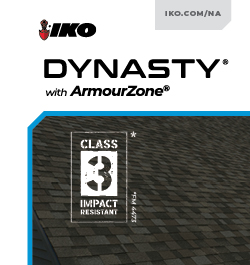A Vehicle Policy is a Must for Company-owned Vehicle Operation

RCS Influencer Trent Cotney says that without a vehicle policy, a contractor can be held liable if they allow a bad driver on the road.
Contractors have many options when it comes to establishing vehicle policies for their business. They may choose to allow employees to take vehicles home or they may decide that vehicles are for business use only and must be locked in at the office each night.
There is not one set policy that works for every roofing contractor, but no matter which type of policy you choose to implement, it’s important to have one in place. Your business can be legally liable if you allow a bad driver on the road. If you fail to take reasonable steps to determine that the driver is qualified to drive one of your vehicles and he or she causes an accident, you could be liable under negligent entrustment. A negligent driver may also damage the company vehicle or incur a ticket, fine, or penalty that costs your business money and/or increases your insurance premiums.
Get started by spelling out the basics of your policy, which might include:
- Requiring employees to have a valid driver’s license and performing a driving record check
- Addressing safety such as making seatbelt use mandatory and creating a cell phone policy
- Establishing who can ride in a company vehicle
- Detailing out exact uses of company vehicles, for instance, can it be taken home or used for personal use?
- Is smoking permitted in the vehicle?
The next step is to consider and address liability concerns. Meet with your insurance provider to review coverages. If your policy allows employees to take company vehicles home, be sure that your insurance policy has the appropriate coverages for the many different scenarios. Ask your attorney to review the policy to be sure your business and your employees’ interests are adequately addressed by the policy and insurance.
Include a section in your vehicle policy on what to do if the driver and vehicle is involved in an accident. Clearly state the steps the driver should take in this situation and be sure each vehicle is equipped with an accident-reporting packet.
Be certain that your Driver Vehicle Inspection Reports (DVIRs) are being completed as required. These requirements can vary for each state so you will want to verify with your state’s department of transportation. The federal requirements for DVIRs require that at a minimum the following items are included:
- Service brakes including trailer brake connections
- Parking brake
- Steering mechanism
- Lighting devices and reflectors
- Tires
- Horn
- Windshield wipers
- Rear vision mirrors
- Coupling devices
- Wheels and rims
- Emergency equipment
You may also want your vehicle policy to permit your company to reduce a negligent employee’s wages to offset the cost of a damaged, impounded, or stolen vehicle (including any company tools or equipment within the vehicle). However, such provisions have to be properly written so that they do not violate federal or state wage and hour laws.
In addition to having your policy written out and signed by each employee who has access or reason to operate a company vehicle, it’s a good idea to make this the topic of one of your regular safety meetings – at least on an annual basis. You may have employees who just skimmed the document or may have trouble reading. By presenting the information visually and verbally you are ensuring that everyone receives and understands the message.
Trent Cotney is the founder of Trent Cotney, P.A. Construction Law Group, specializing in construction law. See Trent’s full bio here.
Author’s note: The information contained in this article is for general educational information only. This information does not constitute legal advice, is not intended to constitute legal advice, nor should it be relied upon as legal advice for your specific factual pattern or situation.






















Comments
Leave a Reply
Have an account? Login to leave a comment!
Sign In